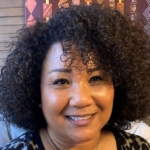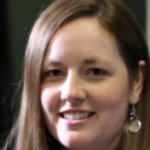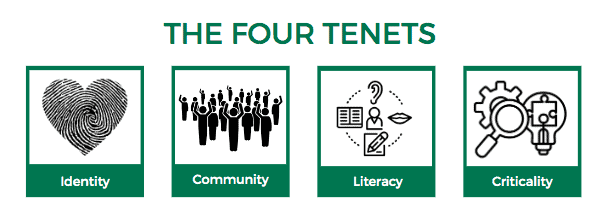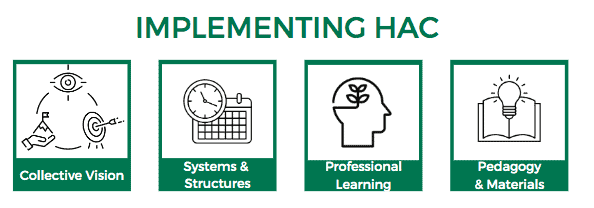Systems function as they were designed. This includes public schools, where there are too many systemwide failures teaching students how to read at grade level, and disproportionately so for Black students, Multilingual learners, and students experiencing poverty. These failures are a feature, not a bug.
Inspired by Gloria Ladson-Billings¹ idea of a ‘hard reset,’ Student Achievement Partners has recently designed a prototype of a new model for 6th and 9th grades that focuses on addressing this school system failure: the Humanities Accelerator Course (HAC). It is a one-year humanities course aimed at radically overhauling how students experience their entry into middle school and high school. The model focuses on building and expanding students’ identity, community, literacy acceleration, and criticality.
Why might a school want to use the HAC model in 6th or 9th grades?
Too few students in today’s middle and high schools have been given the opportunity to independently read and understand grade-level text. This reality is reflected in the most recent NAEP data, where only 31% of 8th graders scored at the proficient or advanced levels. The first year in middle school and the first year in high school are critical for students’ engagement in the remainder of their schooling. A school interested in providing an engaging, relevant, and accelerating experience for students might try the HAC model.
What is new about the HAC model?
Influenced by the work of Dr. Gholdy Muhammad, Dr. Zaretta Hammond, and Dr. Gloria Ladson-Billings, HAC is an acceleration model that offers students a high-quality course anchored by four tenets that affirm students’ identity, develop community, accelerate literacy, and hone criticality. In this way, the HAC model is designed around a robust set of literacy accelerators that center on honoring student identity and extending understanding of that identity to include being critical members of society. In order to support that kind of instruction, students engage in a humanities course in which local and state standards for social studies and English are integrated and embedded. Topics, texts, and tasks are chosen not only to align to standards but also to maximize engagement, reflect cultural relevance, and allow elements of student choice and individualization. When needed, foundational skills support is embedded.
The design of HAC suggests a different structure for the course than is traditionally seen in middle and high school. This structure includes:
- Multiple Class Periods: English Language Arts and History-Social Studies combine to create a humanities course focused on building identity, community, literacy, content knowledge, and criticality. The final “Third Period” deepens humanities course work and gives the opportunity to build research and reading/language skills. For more information on the structure of this third period, check out the Third Period Framework.
- No Tracking: As a course for everybody, not just a subset of the school population, HAC must be structured for equity. Classes cannot be segregated by any form of tracking. Students should be enrolled in HAC and assigned courses heterogeneously.
- Cohort of Students and Teachers: A team of ELA, History-Social Studies, ESL, SPED, and paraprofessional teachers would team or co-teach a cohort students for this extended block of time.
This course starts with students writing their own Autobiography, engaging in a Text Set on brain science, and a close-read of the graphic guide How We Read. These activities anchor the launch of the course in a way that provides students with a strong grounding in their own identity development and a strong connection to their own literacy acceleration.
More about the goal, structures, and materials for the HAC model can be found on the Humanities Accelerator Course page.
How can a school or district implement a HAC model?
There is certainly no one right way to implement a HAC model. Schools and districts currently implementing the model are approaching the work in a way that best suits their local needs and conditions. However, we recommend that any team looking to prepare, launch, and sustain a HAC model focus this work in four major areas:
- Collective Vision – What do stakeholders agree is the rationale and purpose for launching HAC? What are the shared goals for implementing HAC?
- Systems and Structures – How can leaders build a model that includes detracking, student cohorts, and common teacher planning time?
- Professional Learning – What knowledge and practices are educational leaders and teachers already familiar with? Which ones will they need learning and support to develop?
- Pedagogy and Materials – To what extent do your existing instructional materials and pedagogical approaches support the HAC tenets? To what extent will they need to shift? For more on aligning current resources and practices, check out this Unit Analysis Tool.
This work is challenging and worthwhile. It requires a team commitment to staying curious, flexible, and collaborative. But, it ultimately creates space for new opportunities for student growth in their earliest years of middle or high school.
Want to give it a try?
Interested in trying out the HAC model? Explore the recently posted resources, discuss them with fellow educators, and let us know what you think!
¹Gloria Ladson-Billings (2021) I’m Here for the Hard Re-Set: Post Pandemic Pedagogy to Preserve Our Culture, Equity & Excellence in Education, 54:1, 68-78, DOI: 10.1080/10665684.2020.1863883























